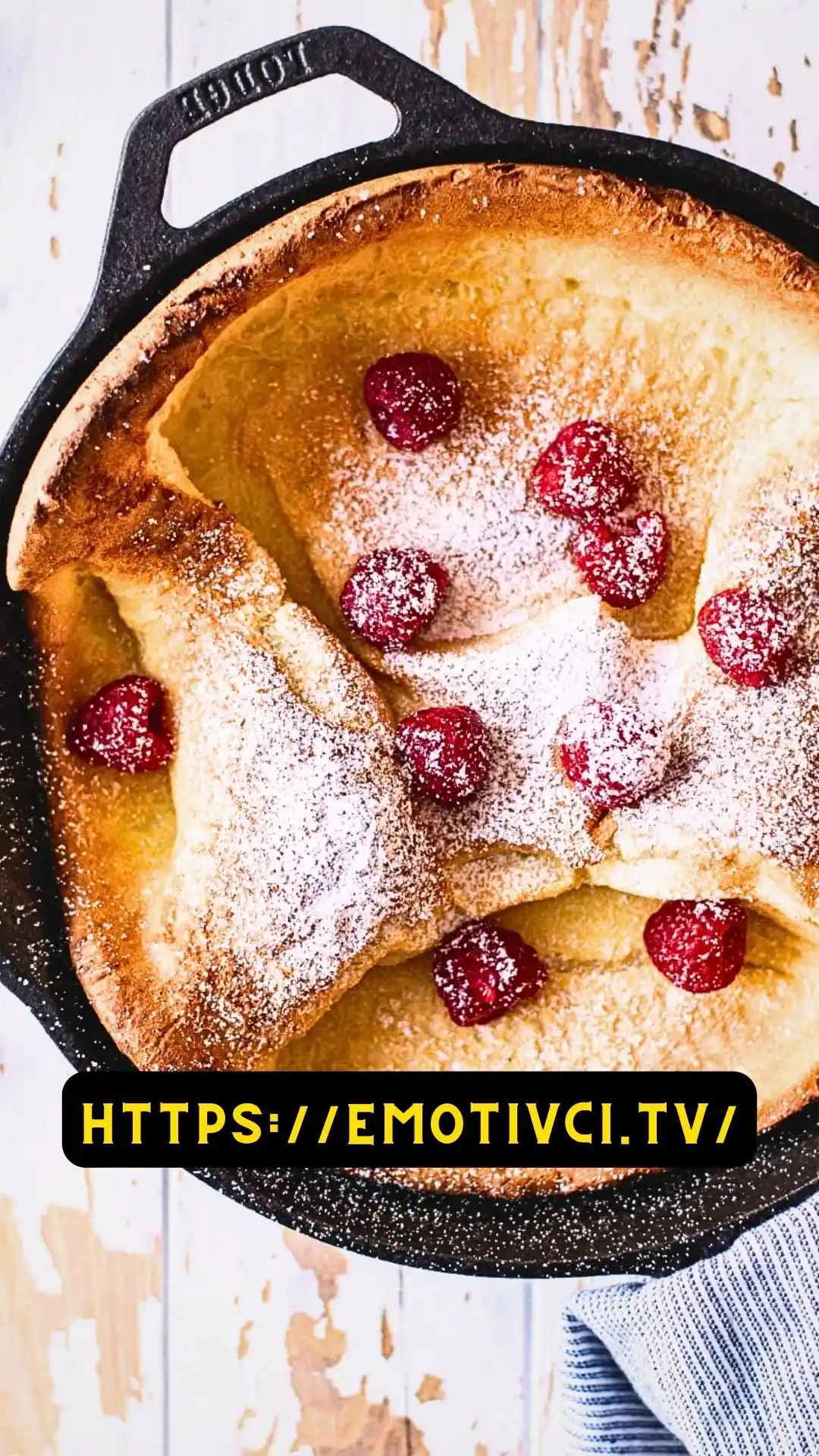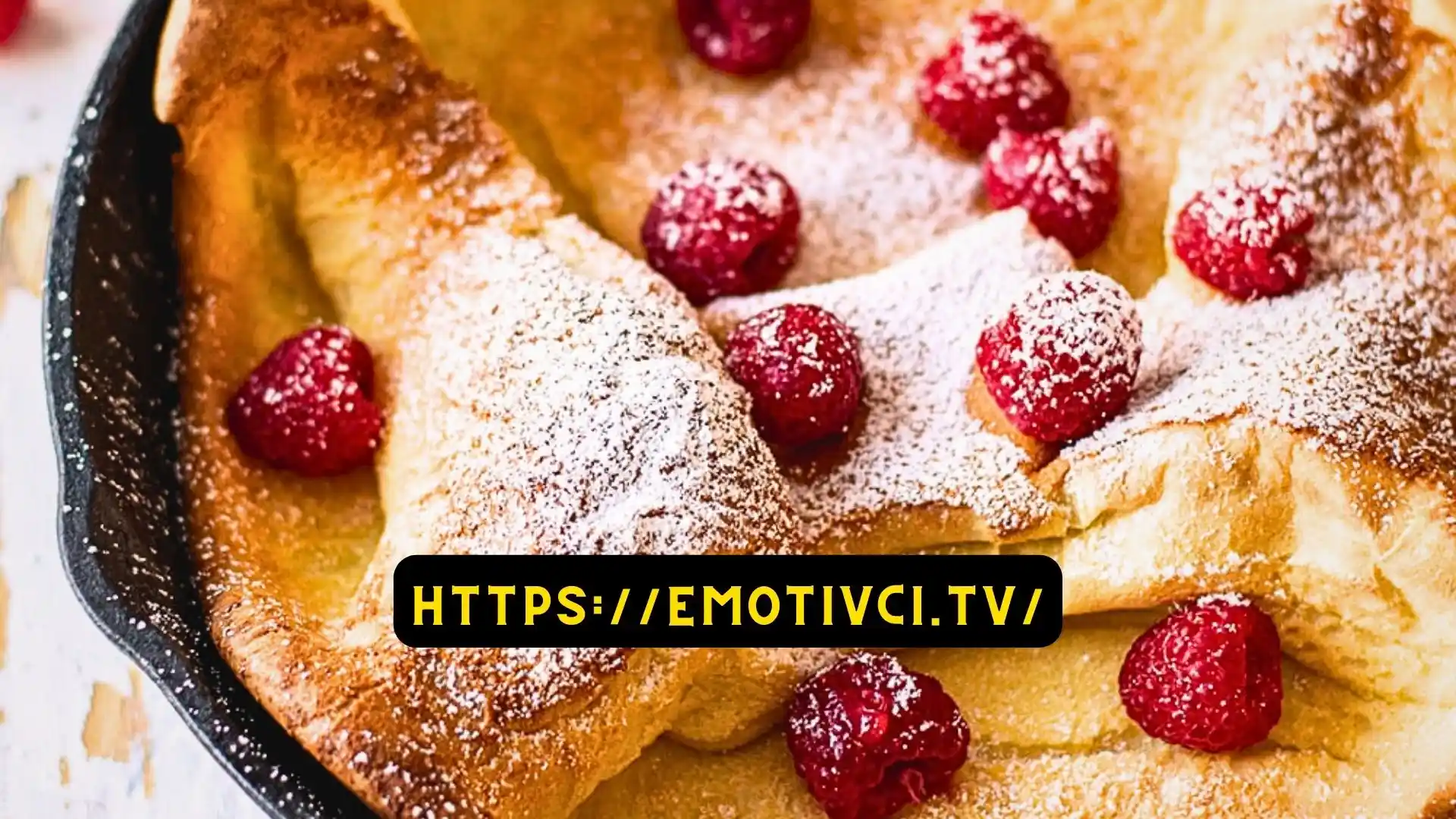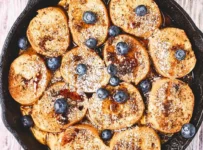A Sweet and Nutty Brunch Treat: Almond Dutch Baby
I have always gravitated towards two main food groups: anything with strawberries or frosting and recipes featuring the warm, nutty flavor of almonds.
So when I first tried making a classic Dutch baby, my mind immediately went to, “How can I turn this into an almond-infused treat?”

After a few failed experiments throwing in blended fruits, I finally struck gold with the perfect balance of sweet vanilla and almond extract to complement the eggy, puffy pancake.
And while this Dutch baby is delicious all on its own, you can take it to the next level with fresh berries, cinnamon sugar, syrup, and more.
Demystifying the Dutch Baby
For those not familiar, a Dutch baby is something of a hybrid between a popover, crepe, and classed-up pancake. It starts with a simple batter of eggs, flour, and milk that puffs up beautifully thanks to some steam and leavening action from the eggs.
Rather than cooking it in a pan like a pancake, you bake it in a sizzling hot cast iron skillet resulting in a crispy exterior and soft, almost custard-like interior.
Unlike a pancake, a Dutch baby isn’t dense or bready.
And unlike a crepe, it has a distinctly eggy flavor and billowy rise. The end result is a shareable, sweet treat that hits the spot for weekend brunch.
You can top it simply with powdered sugar and lemon wedges or go all out with fresh fruit, syrup, sweet cream, and more.
Secrets to Dutch Baby Success
The keys to Dutch baby greatness lie in three simple steps:
1. Blend up an airy, smooth batter. Beating air into the eggs is what gives it that rise for a dramatic reveal when you pull it from the oven. I use a personal blender to get my batter perfectly homogenized.
2. Let the batter rest. Give it at least 10 minutes on the counter after mixing so it comes closer to room temperature before baking. This helps ensure it puffs properly in the oven.
3. Use a screaming hot cast iron skillet. You need a vessel that can retain and distribute heat well. Preheat your skillet in a hot oven so that it sizzles when you add the butter.
Getting these steps right means your Dutch baby will rise high around the edges and develop a contrasting crisp exterior and custardy interior.
An Importnat Note on Portioning
- When making a Dutch baby, skillet size matters. You want enough batter to generously coat the bottom in a 1/2-inch layer. Too little and it will overcook.
- Too much and it won’t have enough structure to rise. For this recipe’s quantity, a 9 or 10-inch cast iron pan is ideal.
The Best Dutch Baby is Flavored Dutch Baby
While classic Dutch baby recipes call for just eggs, flour, milk and maybe a bit of vanilla, I like to incorporate mix-ins and extracts to take them to a new level of flavor.
My almond Dutch baby recipe adds a teaspoon of almond extract and a bit more sugar to balance out the nutty addition.
You can also flavor them with spices like cinnamon and nutmeg or citrus zest. Or add a spoonful of melted chocolate for an ode to chocolate croissants. The light cakey texture readily soaks up these extra flavors.
Once your Dutch baby emerges from the oven, the toppings are up to you. The nutty almond flavor pairs especially well with fresh berries, maple syrup, cinnamon sugar for sprinkling, or all of the above. Dig in and enjoy!
Ingredients:
For the Almond Dutch Baby:
- 3 large eggs
- 1/2 cup all-purpose flour
- 1/2 cup milk
- 1 tablespoon plus 1 teaspoon granulated sugar
- 1/2 teaspoon almond extract (alternatively, vanilla extract adds a classic flavor)
- 2 tablespoons unsalted butter
For Serving Suggestions:
- Mixed fresh berries like raspberries, blackberries, and blueberries
- Confectioners’ sugar
- Cinnamon sugar
- Maple syrup or honey
Instructions for Cooking
1. Preheat your oven to 425°F. Have a 9 to 10-inch cast iron skillet ready to go.
2. In a blender, combine the eggs, flour, milk, granulated sugar, and almond extract. Blend until completely smooth with no lumps, about 1 minute. Let batter rest at room temperature for at least 10 minutes while you prep the skillet.
3. Add the butter to your cast iron skillet and place in the oven just until melted – do not let it burn or brown. As soon as the butter has melted, pour in the batter. It should sizzle when it hits the pan.
4. Bake for 20 minutes without opening the oven door. After 20 minutes, the Dutch baby should be nicely puffed and starting to turn golden brown around the edges.
5. Lower oven temperature to 300°F and bake for an additional 5 minutes until deep golden. Carefully remove skillet from oven.
6. Top your Dutch baby with desired toppings like fresh berries, confectioners sugar, cinnamon sugar, maple syrup, honey, or a combo. Slice into wedges and serve warm directly from the skillet. Enjoy!

Helpful Tips
- Use unsalted butter instead of salted – salted overwhelms the other flavors. If you only have salted on hand, use 1 tablespoon butter mixed with 1 tablespoon neutral oil.
- Make sure your skillet is very hot when adding batter so it sizzles right away. This helps create maximum rise and crispy edges.
Discover another yummy recipe (Flavorful Sweet Potato Breakfast Hash Recipe) that aligns perfectly with our current culinary theme.





